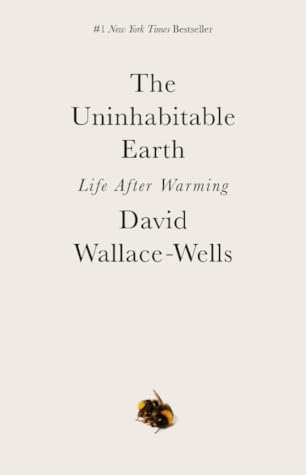More on this book
Community
Kindle Notes & Highlights
Read between
September 21 - September 30, 2019
the optimists have never, in the half century of climate anxiety we’ve already endured, been right.
At two degrees, the ice sheets will begin their collapse, 400 million more people will suffer from water scarcity, major cities in the equatorial band of the planet will become unlivable, and even in the northern latitudes heat waves will kill thousands each summer. There would be thirty-two times as many extreme heat waves in India, and each would last five times as long, exposing ninety-three times more people. This is our best-case scenario.
governor Jerry Brown described the state of things in the midst of the state’s wildfire disaster: “a new normal.”
The truth is actually much scarier. That is, the end of normal; never normal again.
Global warming has improbably compressed into two generations the entire story of human civilization.
“A crime is something someone else commits,” from Steinbeck—like this: “Someday, perhaps not long from now, the inhabitants of a hotter, more dangerous and biologically diminished planet than the one on which I lived may wonder what you and I were thinking, or whether we thought at all.” For much of the book’s prologue, he writes in a past tense rendered from an imagined, devastated future. “Of course we did it to ourselves; we had always been intellectually lazy, and the less asked of us, the less we had to say,” he writes. “We all lived for money, and that is what we died for.”
Melissa liked this
In 2018, a major study found things accelerating faster still, with the melt rate of the Antarctic ice sheet tripling just in the past decade. From 1992 to 1997, the sheet lost, on average, 49 billion tons of ice each year; from 2012 to 2017, it was 219 billion.
One study suggests that the Greenland ice sheet could reach a tipping point at just 1.2 degrees of global warming. (We are nearing that temperature level today, already at 1.1 degrees.)
The climate effects on extreme precipitation events—often called deluges or even “rain bombs”—are even clearer than those on hurricanes, since the mechanism is about as straightforward as it gets: warmer air can hold more moisture than cooler air.
Dreamtime weather won’t stop at the shore, but will blanket the life of every human living on the planet, no matter how far from the coast. The warmer the Arctic, the more intense the blizzards in the northern latitudes—that’s what’s given the American Northeast 2010’s “Snowpocalypse,” 2014’s “Snowmageddon,” and 2016’s “Snowzilla.”
But of all urban entitlements, the casual expectation of never-ending drinking water is perhaps the most deeply delusional.
Over the past fifty years, the amount of ocean water with no oxygen at all has quadrupled globally, giving us a total of more than four hundred “dead zones”; oxygen-deprived zones have grown by several million square kilometers, roughly the size of all of Europe; and hundreds of coastal cities now sit on fetid, under-oxygenated ocean.
And then there is the possible slowdown of the “ocean conveyor belt,” the great circulatory system made up of the Gulf Stream and other currents that is the primary way the planet regulates regional temperatures.
That would bring us to between 1.5 and 2 degrees warmer than the preindustrial baseline—pushing us right up to the threshold of 2 degrees of warming, long thought to be the border separating a livable future from climate catastrophe.


